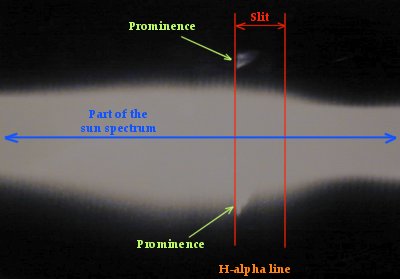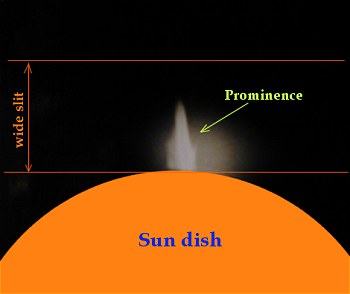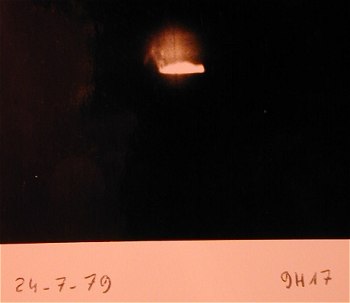An ancient sun prominences observation
or
How to construct a low cost coronograph ?
The principle:
(1) Construct a very simple slit spectrograph (two binocular lens, an economical slide transmission diffractive grating of 1200 grooves/mm, a two razor blade slit and a wood structure). (2) Focus an image of the sun into the entrance slit of this spectrograph. (3) Tangent the sun limb with the slit (two or three millimeters wide) and observe the Ha spectral region (6563 angstroms, i.e. the red part of the spectrum). This is all!
The instrument in action:

Photographic image of the Ha line (July 1979 - no CCD!). The slit is nearly tangent to the sun dish. Prominences are clearly visible in emission.

The position of the slit relative to the sun dish...

Another prominence (July 24, 1979, use of a PERL 4-inch refractor). A very impressive view of the sun for a very low cost ! At the present time a webcam receptor is useful for this type of application.
Now, if you scan the entire solar disk with a narrow slit (diurnal movement) it is possible to acquire a monochromatic image of the sun (the detector is for example a linear CCD, like the KAI-5002 of Kodak, aligned with the position of the desired wavelength in the spectrum). This is a static spectroheliograph. For a very fine description of this setup look for exemple the Philippe Rousselle site's.
Remenber also the possibility to observe in the Ca H&K lines with relatively large spectral band and economical filters.
Click here for a similar modern webcam observation...
